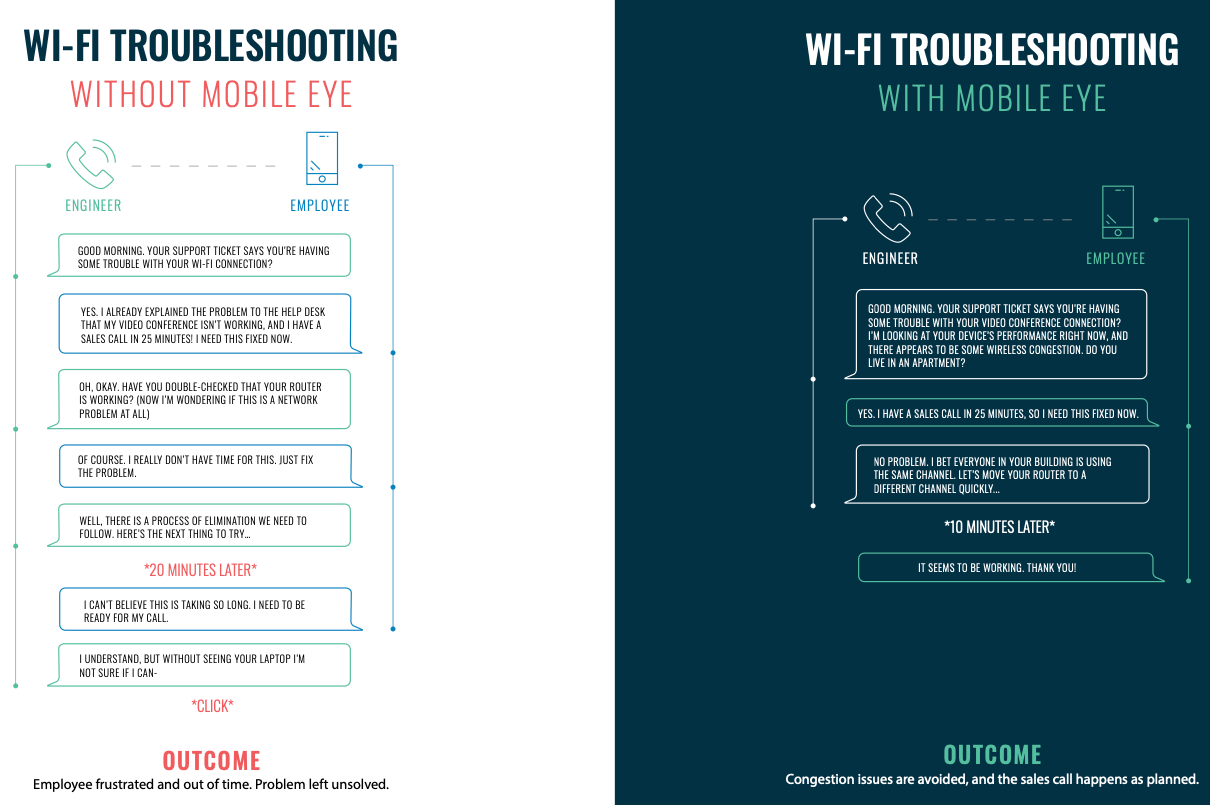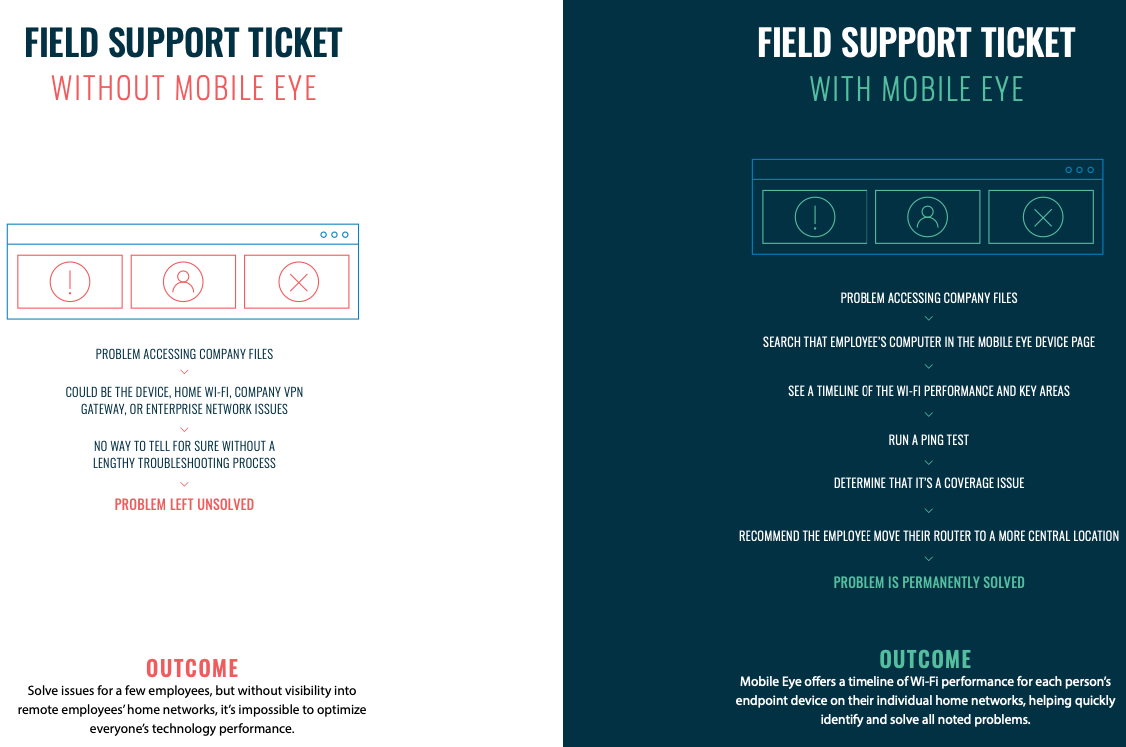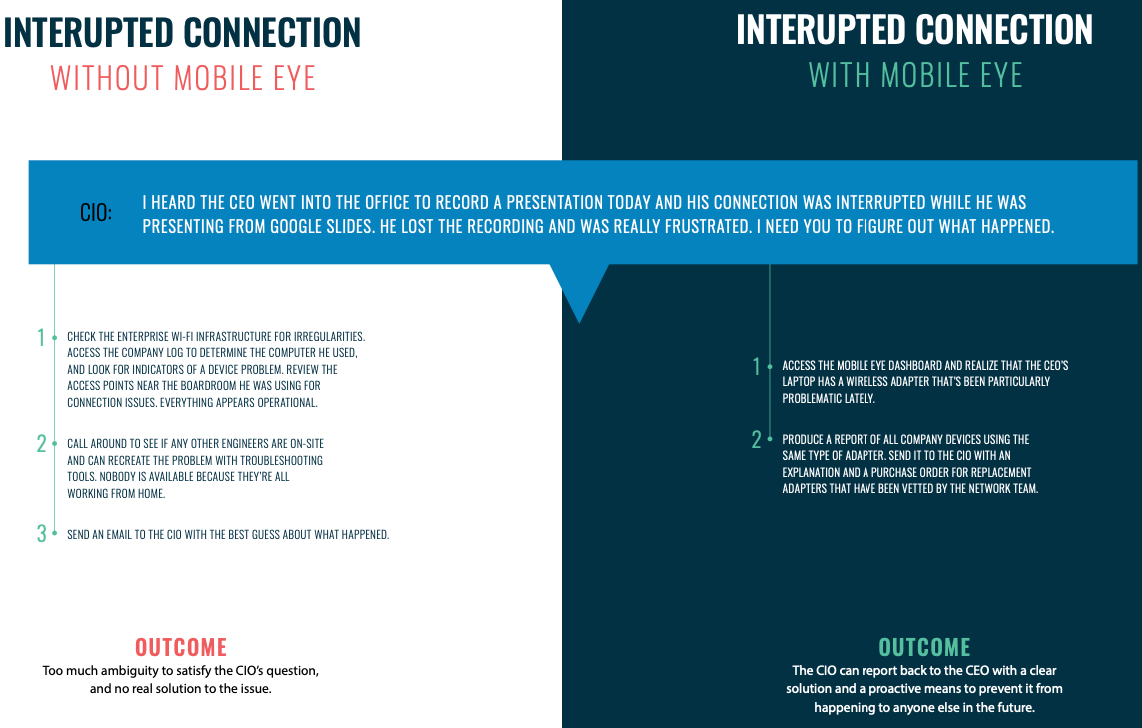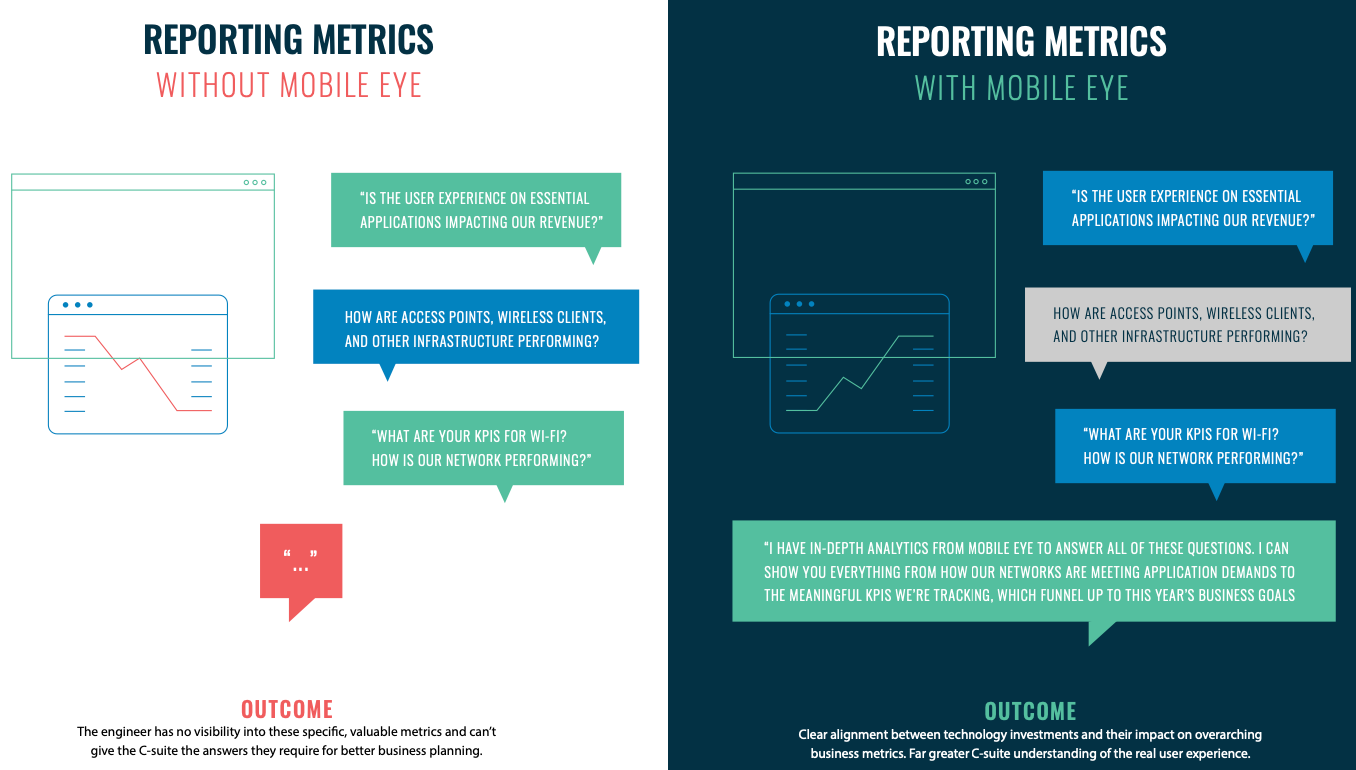Blog
What’s it really like to manage networks? The challenges can add up—especially when remote work creates even more issues for Wi-Fi engineers.
Wi-Fi engineers have always had their hands full with requests, help-desk tickets, full email inboxes, and expectations from the C-suite. But these challenges are only heightened now that many employees are working remotely.
So what does it really look like to be a Wi-Fi engineer? Here’s “a day in the life” of a typical engineer—and how an effective wireless network monitoring solution can completely change the outcomes.
9:00 am – 9:30 am: Call an employee about a high-priority support ticket
First thing in the morning, a Wi-Fi engineer contacts an employee who is having an issue with their Wi-Fi connection.
A typical interaction may take more than 20 minutes to figure out the underlying problem. The engineer will have to ask initial questions, troubleshoot through checking the router, and try to figure out what’s causing the issue. This process can create a lot of frustration for the worker who has the problem—they need to be on a video call in 25 minutes. And the outcome of this scenario is often a frustrated employee and an unresolved issue.
With the Mobile Eye® from 7SIGNAL, however, the engineer can see why the device isn’t performing properly, establishing right away that there is some wireless congestion that needs to be addressed. The engineer then asks if the worker lives in an apartment building. If so, all that needs to be done is move the router to a different channel.
The employee gets quick assistance so they can make their video conference without an issue.

9:30 am – 12:00 pm: Field support tickets
Next up is fielding support tickets. One ticket states that an employee is having a problem accessing company files. Without the Mobile Eye, the engineer assesses that it could be the device, their home Wi-Fi, the company VPN gateway, or enterprise network issues. It's nearly impossible to figure it out without going through a lengthy troubleshooting process, and the problem isn't resolved.
But the Mobile Eye can allow the engineer to search for the employee’s device, view a timeline of the Wi-Fi performance issues, run a ping test, and discover that there’s a coverage issue. The engineer tells the employee to change the location of their router. Voila! The problem is handled almost immediately, and the employee can get back to work.

12:00 pm – 1:00 pm: Receive an instant message from the CIO
Around lunchtime, the Wi-Fi engineer gets a message from the CIO saying that he noticed the CEO had a connection issue while giving a presentation using Google Slides. The CEO became frustrated, and the recording was lost. It's now up to the engineer to find out what caused the drop.
Engineers that don’t have access to the Mobile Eye would likely check the enterprise Wi-Fi infrastructure for irregularities and look for a problem with the CEO’s device. They might then assess the access points near the conference room. If the issue is still not identified, the engineer will try to recreate the problem with troubleshooting tools, which requires help from other engineers. If they’re all working at home, this is nearly impossible. The engineer must make the best guess.
The Mobile Eye provides a much better experience. The engineer can simply view the platform’s dashboard and see right away that the CEO’s computer has a problematic wireless adapter. Then they pull a report of company devices using that adapter, send all the info to the CIO, and put in a purchase order to get new equipment that works better.
Not only is the right issue discovered, but everything is done in half the time.

1:00 pm: A call from the help desk
Just after lunch, the engineer gets a call from the help desk saying they have an accounting employee on the line with crashing software. With the Mobile Eye, the engineer can immediately view the employee’s SSID in the dashboard, determining that the connection is strong. They can instantly see that it’s not a network issue and point the employee to a software-specific troubleshooting process.
Without this visibility, tensions can grow fast between the help desk and the network engineering team as the issue’s cause remains unknown.
1:45 pm: Check inbox: 50 new emails!
A major responsibility for network teams is answering and resolving problem tickets promptly. Inboxes fill up fast with issues and requests, and an engineer often quickly resolves the easier issues while leaving the overall network problems for later.
However, with the Mobile Eye, the engineer can provide fast answers to nearly every request—so there’s not a lot left in the queue. Problems are resolved faster and more effectively.
3:00 pm: Pull reporting metrics for a meeting
In an upcoming management meeting, the engineer will be asked questions about how the user experience on essential business applications impacts revenue, how the infrastructure is performing, and what the top KPIs are for Wi-Fi performance. Without good data and visibility, the engineer can’t provide helpful information.
But with the right tools, the engineer can discuss how technology investments are directly related to business success. Mobile Eye data shows how the network is keeping up with application demands, which KPIs are tracked, and how it’s all helping the business reach its goals.

5:00 pm: End of day: How’d they do?
Let’s compare how the day went versus how it could have gone without the Mobile Eye.
Without the Mobile Eye:
- A sales employee couldn’t conduct a video call and thus lost revenue
- Many support tickets were left unresolved
- The CEO and CIO saw a disconnect between the engineer and Wi-Fi problems
- There was friction between the help desk and the network team
- Employees still have unresolved home network issues
- Engineers don’t know how the network’s performance impacts business ROI
Overall, there was a lot of lost productivity directly related to unresolved Wi-Fi problems.
With the Mobile Eye:
- Revenue increased with a seamless sales call
- Support tickets were addressed with the right solutions
- The C-suite has confidence in its engineers
- The help desk and network staff exhibited teamwork
- Remote employees were able to keep working because issues were solved right away
- The company gained insight into the ROI from network technology
Productivity was higher, and there was superior integration between teams, supporting a more productive, informed business.
The Mobile Eye from 7SIGNAL is a game-changer for many organizations. Without continuous monitoring, it’s impossible to quickly identify problems, deploy solutions, and keep productivity high.
7SIGNAL® is a leader in enterprise wireless experience monitoring. 7SIGNAL provides a cloud-based platform that continuously monitors wireless networks and identifies elusive performance issues impacting application performance and digital experience. By taking the “outside-in” approach to monitoring, 7SIGNAL has visibility into the edge of any enterprise or home Wi-Fi network where complex device interaction exists, and user experience matters most. The platform maximizes employee productivity, operational efficiency, and network ROI. Sapphire Eye® and Mobile Eye® are designed for and deployed at the world’s most innovative organizations, educational institutions, healthcare systems, and government agencies. Learn more at www.7signal.com.